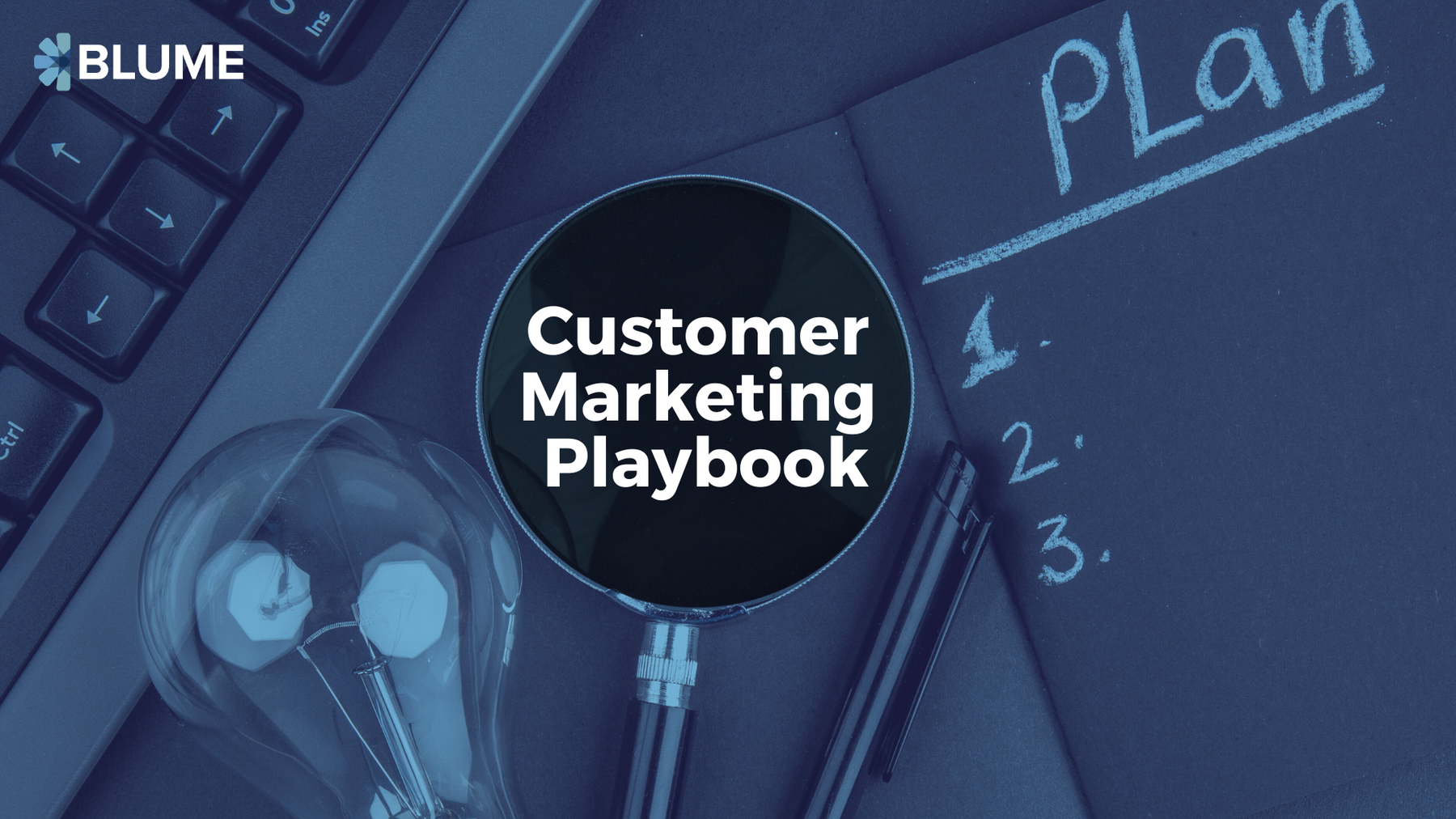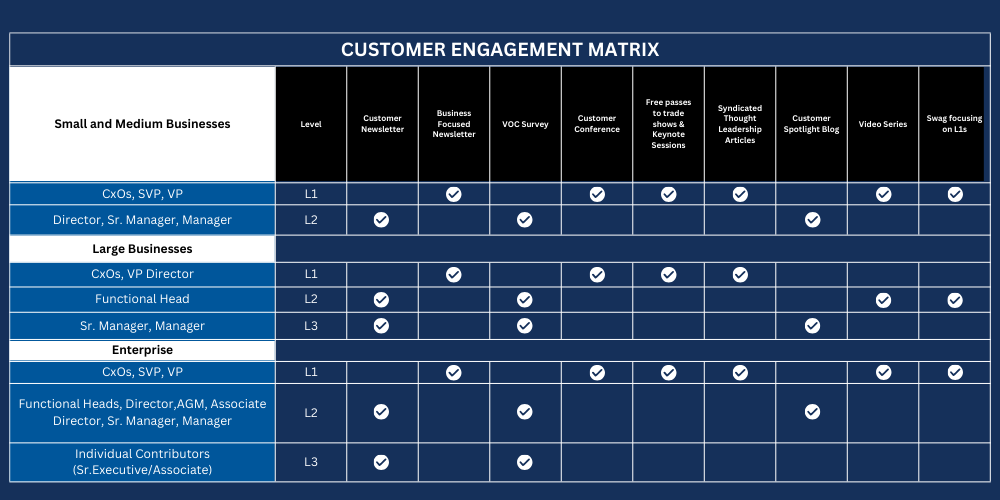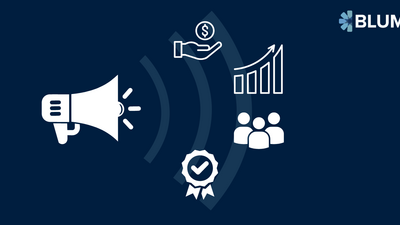“Sell me this pen.”
In the final scene of The Wolf of Wall Street, Leonardo DiCaprio's Jordan Belfort walks around a large conference room, asking everyone to sell him a pen.
The attendees look puzzled and mumble about the pen. He doesn’t wait for them to finish. He quickly moves to the next one and asks them to do the same.
There are two ways to sell this pen to Jordan. One is as a salesperson of the pen company, emphasizing how his life will change by using the pen, which is what sales/marketing teams at a SaaS company do. The other is through ‘customer marketing.’
Customer marketing has slowly but surely entered the marketing mix for SaaS companies. Founders do it in different stages—building a community, reaching out to customers for case studies, organizing a customer roundtable, etc. However, connecting the dots and leveraging customer marketing to drive revenue is important.
This article aims to help founders thread different parts of customer marketing, such as:
- How can early-stage SaaS companies start with customer marketing?
- Setting up a team structure for successful customer marketing.
- What are the KPIs for customer marketing, and how to measure them?
- How is it different from customer success?
For this article, I spoke to two early practitioners of customer marketing in India: Yasasree Nerayanuri, Vice President of Customer Marketing & Community at Sprinklr, who built customer success and marketing at Freshworks from the ground up, and Raghav Kumar, Head of Marketing at Scribble Data, who built the customer marketing function at CleverTap.
Before we get into the weeds, let’s start with the basics.
What is customer marketing?
“Customer marketing is essentially marketing with your customers, not to your customers,” said Yasasree.
‘With’ your customers…
That’s powerful.
This means the customer is your marketer, and you are your customer’s marketer.
Raghav added, "There are three broad KPIs of customer marketing: revenue retention, revenue expansion from existing customers, and customer advocacy and evangelism."
And before you ask, customer marketing isn’t customer success!
According to the ‘State of Customer Marketing’ report by Customer Alliance Marketing, most customer marketing professionals work in marketing (71%), followed by product marketing (14.6%), customer success (5.8%), and sales (4.3%).
Yes, customer marketing works closely with customer success, but the relationship comes with set boundaries and responsibilities (more on it later).
Should an early-stage SaaS company invest in customer marketing?
Yasasree says an emphatic yes! She says customer marketing can even start before launching the product, and it's no longer just for mature companies.
Yasasree: “There was a time when we thought you needed a big budget for it, and only a large company would do it. But look around. Companies like Rocketlane have built a community even before launching the product.” (PS—learn more about Preflight, Rocketlane’s community, here.)
“Founders tell me that when you want to raise your next round, VCs want to talk to customers. So, you need to identify the right customers to portray in front of VCs. Your prospects want to talk to existing customers before signing up. These use cases come in early on in the game today. You can start on day zero.”
Raghav agrees.
“I think you should start investing time in customer marketing when you close your first customer. Get their logo approval and a G2 review. Start with the basics from day one.”
Early-stage companies can start with one or two activities and double down on them. These include:
- Start a community.
- Create a customer advisory board and onboard potential customers as advisors.
- Create case studies with your current customers
- Use early customers for investor relations
- Get early customer ratings on software review aggregation sites like G2, Capterra, etc.
While these activities might not directly generate revenue, they will influence the company's future by attracting investment, building a customer pipeline, and getting feedback to refine your product roadmap.
But who will do all of this?
How to get customer marketing off the ground
Start by knowing the customer(s) or the ICP in the early stages and one part-time customer marketing person.
Raghav said, "When I started in customer marketing, I didn’t expect the role to involve a lot of face time with the customers."
“But I couldn't be more off base because I forgot the most important aspect of customer marketing - the customer. I interviewed zero customers and had no idea why they used our product or why they would give us their credit card details to access more of it. All you need to do is talk to the top 10% of your power users to understand what they really want from you and realize the power of your product.”
In the early stage, have your main marketing person own a set of customer marketing activities as their KRAs instead of having an FTE do only customer marketing.
“If you have two or three customer success folks, a dedicated customer marketing person may be overkill because the customer success team won't have the bandwidth to introduce them to key accounts or get references or case studies. This is where ‘slashies’ come in,” said Raghav.
A slashie is a person who does other activities (mostly marketing) while also owning customer marketing.
Yasasree expands on this thought.
“We started with one marketing person embedded in the customer success team. They did all account marketing, such as drafting and creating a newsletter that the CSMs can personalize and send out to their accounts,” said Yasasree. CSMs might want to do webinars or press releases with customers, and the customer marketer could enable these activities.
To track customer marketing success early on, monitor their advocacy wins, such as logo permissions, case studies, and customer testimonials on review sites like G2.
Make your customer marketing programs simple and frictionless for customers to participate in. The easier it is for them, the better your outcomes will be.
Yasasree recounts an experiment that paid rich dividends in Freshworks to highlight why simple is sweet when it comes to nurturing.
“We created a short, punchy email. We just asked one multiple-choice question with four options. Let’s say the question is, what's your biggest business problem? We gave them A, B, C, and D options. All they had to do was reply with A, B, C, or D. So many replies flooded it,” remembered Yasasree.
“The best part is it'll help us understand which product suits this person. And then you respond with a very contextual answer: Hey, so and so people from so many companies have faced this issue, and this is how they've solved it with our product. If you want to chat, let us know how we can help you and so on. Ultimately, this can lead to a proper account-based marketing approach with select existing customers.”
When should a founder scale the customer marketing team?
Raghav said, "Once you have about 10 people in customer success, it makes sense to hire your first full-time customer marketer."
Interestingly, according to the State of Customer Marketing Report, one-person teams are the second most common, with 36% of respondents confirming they have one FTE for customer marketing. Teams of 2-5 comprise ~50% of respondents, with only ~15% having more than six members in their customer marketing team.
How should growth-stage companies look at customer marketing?
1. Apply the 10% rule for resource allocation
Raghav says, "For customer marketing, most companies follow a 10% rule for budgets, team, and resourcing. You’d want to have your customer marketing team 10% of the size of your customer success team. This might vary slightly with where you are in your journey, but is a good yardstick. Allocate 10% of your marketing budget for net new revenue. So, if you are spending 100k on marketing, at least 10k should be on customer marketing--retention, expansion and advocacy.”
The 10% rule helps with everything from hiring to allocating financial resources.
2. Use the DNM (Discover, Nurture, and Mobilize) Framework to activate customers
How do you scope customer marketing activities after deciding to invest?
Say hello to the DNM framework!
Discover: Look at your customer base and decide which profiles to target.
Nurture: Set up a matrix of activities based on company size (or ACV) and their position within the company.
Mobilize: ‘Convert’ these customers into champions through these activities.
The first step of the DNM framework is to segment customers by size and level.
“We broke this down internally into three customer segments: L1s, L2s, and L3s," said Raghav. "L1s are CXOs and senior VPs, L2s are functional leads, and L3s are individual contributors. Each persona has different motivations."
What motivates L1s?
Raghav: “L1s are deeply impacted by cost savings and people efficiency. They look for features which can make their functions more efficient/less costly. Even a discount on annual billing interests them.”
What motivates L2s?
Raghav: “L2s are mid to senior-level managers who are on the cusp of leadership and want to be seen as thought leaders. It's about exposing them to major industry events and helping them build their public persona as an expert as they evangelize your product. We help them build connections, speaker profiles, personal brands, and more.”
What motivates L3s?
Raghav: “L3s are individual contributors most interested in their Learning and Development (L&D). The content and training material you create are of great value for them.”
With that being laid out, here’s a baseline list of activities for the customer marketing function. This isn't an exhaustive list, so feel free to be creative.
This table shows how to break up customer marketing activities. It is tailored for companies in the growth stage and needs to be customized for your company’s stage/market/target ICP.
How should one consider team structure, especially in growth-stage companies, given this list of activities?
3. Create growth and advocacy teams
As Raghav said, customer marketing teams have three KPIs - revenue retention, revenue expansion, and customer advocacy. These KPIs are divided between growth and advocacy.
Growth
Yasasree: “One part of the team is focused on driving growth from our existing customer base, building pipelines for upselling or cross-selling. These folks constantly analyze customer signals to identify their next purchase and how to guide them. How do you figure out where they are in their journey? Who's ready for your next product? Who's happy? What's their health score?”
The growth team takes a programmatic approach to understand customer needs and determine the product to sell to them. They constantly acquire, nurture, and prepare customer contacts for SDR or sales chat.
To assign number KPIs to your growth team, start by tasking them to drive X number of opportunities if you're in the early stage. If mature, set a pipeline goal and say, ‘This is the revenue we are going to get from marketing to the existing customer base’.
Advocacy
Yasasree: “Advocacy is about identifying champions for your company in your customer’s company, like building a loyalty program for the B2B world. The rule is: How do you give before you ask?”
The days when Starbucks or Amazon vouchers for G2 reviews would work are gone. People want professional rewards for engaging with you. Creating a scaled-out advocacy program and onboarding your advocates into it is no longer optional.
Here are the key pillars of an advocacy program.
- Engage: Engage and participate in various company activities of your interest
- Earn: Earn reward points for each of your company for each activity
- Redeem: Redeem your reward points for a host of benefits
Here’s how customers can ‘engage’ and ‘earn’ points.
- Speaking opportunities
- Customer reviews
- Customer references
- Testimonials
A common mistake companies make is confusing prospects and customers.
“Companies will create a newsletter for prospects and then think, ‘Oh, we have so many customers. Let’s blast it to them also.’ They may host a super prospect-focused webinar, which talks about top-of-the-funnel information, but invite existing customers. However, it's important to recognize that customers have already bought your product,” said Yasasree.
What do customers want?
“They want to listen to the product team, telling them what should happen on the ground and how they should see results. What best practices are people using in their domain to leverage the product?” said Yasasree.
Here are some ‘benefits’ you can offer to them for redeeming their points:
- Early access to new features and updates
- Exclusive training and educational resources
- Discounts and promotions
- Public recognition
- Exclusive events and networking opportunities
- Influence on the product roadmap
- Referral incentives
- Priority support and dedicated account management
4. Revenue, revenue, and more revenue is the goal. Don’t fuss over attribution
How to measure the impact of customer marketing?
According to Yasasree, many founders don't prioritize customer marketing because they can’t find a way to tie it to revenue. They see customer marketing as just advocacy.
Yasasree said, “Many customer marketing leaders think their North Star metric is the number of advocates and stories, which is necessary. But ultimately, it is the revenue that customer marketing brings that matters.”
How can driving a pipeline be achieved through these activities? What happens next if there’s a happy customer, and you share their story through a case study, testimonial, or video?
"Did the customer story attract three new prospects? We're not saying the revenue should be solely from your existing customer base,” she adds.
“Are you getting MQLs and SQLs from your community platform into your CRM? And how many of those prospects close? There's first-order revenue, which is coming from existing customers and second-order revenue is what kind of revenue influence you're driving.”
Yasasree reckons that customer marketing can provide up to 25x return on investment, depending on the company’s stage. To drive home the point, she takes the example of running a webinar or an event.
“Running a closed-door webinar for your prospects costs nothing. You just need the topic and guest. An event where your customer comes and speaks may cost you $3000-$4000. If you land even one deal, you've earned back multiples of what you spent. The same goes for launching a community. Besides the platform fees, you're spending nothing.”
“It's about leveraging your existing customer base to boost revenues at a very low cost. Earlier, the metrics were: Have you created some opportunities? Leave it there. Have you published X number of stories? Okay, leave it there. But times are changing.”
Another important point to highlight is attribution, given we're talking about metrics. How does customer marketing that operates alongside marketing and customer success measure its impact?
“People spend a lot of time debating attribution. I’d say that your process shouldn't torture your customers just because you want attribution. Don't let people not do something just because they don't get credit.”
“One way to do this is to use the metric of overall marketing influenced pipeline for the customer marketing team. It's okay to double-credit the teams as long as the numbers are met and the company is doing well revenue-wise.”
5. In all the revenue rush, always keep the soft benefits in mind
While revenue generation is important, it's crucial to keep a keen eye on the softer benefits of customer marketing.
Customers often distrust the sales team for always pushing new features or products. They have a very transactional relationship with the customer success team.
“They don't even meet the customer success team until they have an issue or it's time for the quarterly business reviews. On meeting customers, I would often tell them to consider me as an extension of their marketing team,” said Raghav.
This means they will always view you as an ally within the company and honestly tell you what’s working and what’s not, be it products or processes. In this way, customer marketing is a bridge between product, sales, customer success and the customers.
6. Know where customer success stops and where customer marketing takes over
To understand the boundaries between customer success and customer marketing, start by asking how their KPIs differ.
Yasasree says customer success should not have a role in upselling/cross-selling.
“After trial and error, we decided to keep customer success managers (CSMs) out of the selling process. We want them to guide the customer and ensure the best product outcome for the customers without any perverse incentives," said Yasasree. "CSMs should be product experts and super customer-obsessed. They should ideally be the voice of the customer inside your company."
Customer success should build connections in the customer’s organization and then hand it over to customer marketing.
Yasasree explained, "When you do a quarterly business review, you get to show your customer advocate in a great light in front of their leadership. These meetings are attended by L1s and that’s when you can connect with them. When customers know that the customer success team's only agenda is making them successful, genuine conversations happen.”
This is where customer success brings in customer marketers.
“CSMs can't organize an event, webinar, or get a Forrester expert for a one-on-one with the customer leader. These are marketing programs. CSMs ensure you first build a happy customer base and showcase customer champion in a good light before you can even think of upselling,” she adds.
Once the product works well and customer marketing nurtures the customer, the contact can be passed on to sales for upgrade/new product conversations.
Raghav addresses some overlaps. There's a close interlock between customer success and customer marketing for revenue retention or churn, as customer marketing can't handle it alone.
If the product doesn't work or the customer success team can't help with the product setup, the customer champion won't participate in a case study for you.
Raghav said, "How many customers become advocates? The increase per quarter from nurture to mobilization stage is easier for customer marketing to measure."
NPS score is another aspect that customer success and customer marketing jointly work towards. (Net Promoter Score measures customer loyalty by looking at the likelihood of a customer recommending a business.)
Raghav said, "The customer marketing team can run NPS surveys and extend them to voice of customer service, but the customer success team also has dependencies on justifying NPS scores."
Customer marketing can own an extension of those NPS scores. For example, if someone gives you a score of 8 or higher, the customer marketing team reaches out to them to build a case study or convince them to give a G2 review. This involves working in tandem with the customer success team.”
In Conclusion
Going back to where we started, an ideal way for Jordan Belfort to teach ‘upselling’ could be this:
He introduces a celebrity customer, basketball legend Michael Jordan, who takes out the pen from his pocket and says it's the best pen he’s ever used, and nothing else comes close.
If this had happened, Belfort would have (imaginarily) taught the most important lesson in marketing: Make customers market for you, and you’ll never need to do anything else.












